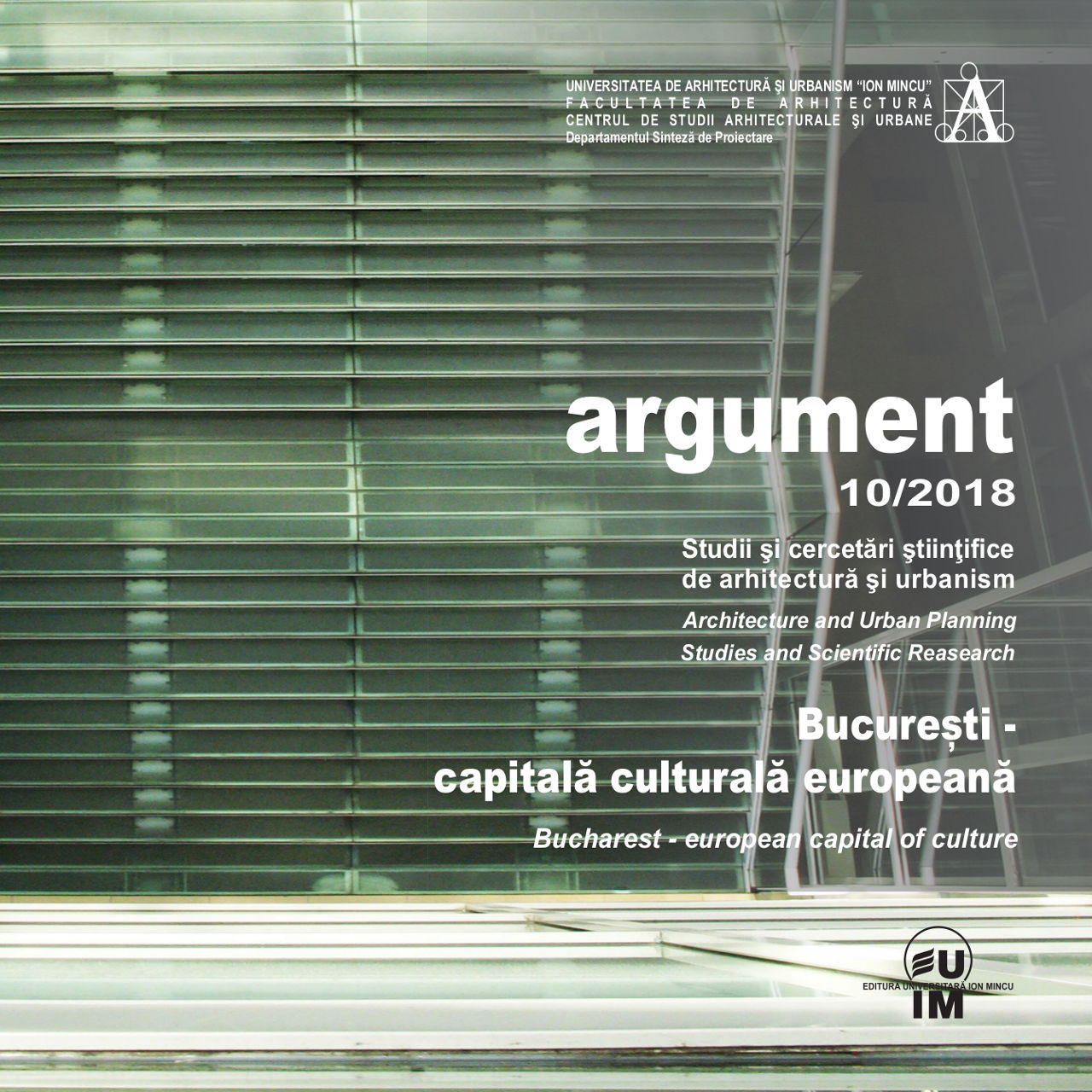BUCUREȘTI, CAPITALĂ (AGRI)CULTURALĂ EUROPEANĂ
BUCHAREST, EUROPEAN (AGRI)CULTURAL CAPITAL
Author(s): Dragos Mihai DordeaSubject(s): Anthropology, Architecture, Social history
Published by: Editura Universitară “Ion Mincu”
Keywords: Bucharest; agriculture; territory; economy; ecology; identity; village; city; metropolis;
Summary/Abstract: One of the most important things in creating a programfor participating in the competition for the titleof European Capital of Culture is defining a city identity.The proposition is a territorial manifesto for Bucharest,necessary for creating a consistent identity which willbe the foundation for a submission for the title of EuropeanCultural Capital. The argument is that of Bucharestwhich reconnects with the ecological matrix of theterritory.Bucharest is located in the middle of a region where agriculturehas been playing an extremely importantpart. What could become the metropolitan area of Bucharestwas initially conceived as an agricultural ring –Ilfov Agricultural County. This is of utmost importanceconsidering the recent urban sprawl which is madewithout any planning on plots from the former agriculturalheritage fund.As Bucharest is a city located in what I like to call, thelower Danube valley, and is placed within the riverscrossing this valley from northwest to southeast. Overlookedpattern on top of which a radial concentricscheme was overlapped. Forcing the concentric radialtheoretical model to the detriment of geometry, the‘ground zero’, as Franco Purini names it, the natural settingon which civilization is situated can no longer copewith the current urban growth, both in its positive andnegative dimensions. The negative dynamics of the population within the boundaries of Bucharest and themassive growth of pre-urban residents in Ilfov show theidentity of Bucharest is in a profound mutation whichneed not only be accepted but also designed. As the neweconomy (based on IT industries and various services)and agriculture can create that sustainable urban developmentmodel that would ensure a real economicand ecological balance, as proposed by Nicolae GeorgescuRoegen. A vision aimed at a spatially and physiologicallyhigh spatial performance model could catalyzethe already existing ecological matrices.Thus, the city / metropolis / capital would benefit fromthe full force of the physical + social + economic + culturalterritories and reveal a new, positive identity, absolutelynecessary for the definition of a European culturalcapital project.
Journal: Argument
- Issue Year: 2018
- Issue No: 10
- Page Range: 9-33
- Page Count: 26
- Language: English, Romanian

